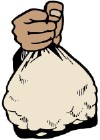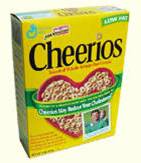
What Is Sampling?
Sampling is a technique that is used in statistics to gather information about a lot of people or things without testing each one. For instance, scientists pull a small container of water from the ocean to test to see if the beach is safe for swimming. Many people follow this same procedure with their backyard pools, testing a small container to check pH levels.
There are companies that gather this kind of information from a small number of people and make predictions about how a larger group will think or act. For example, the Nielsen ratings gather information on which TV shows a small sample of Americans watch. The Nielsen company then publishes which shows Americans watch the most or watch the least based on this small sample. These are called the Nielsen ratings and they determine how much money advertisers pay for TV commercials. The more people who watch the show, the more an advertiser will have to pay for a commercial during that show. The Nielsen Company very carefully selects the people who participate in this sample so that they are representative of the country as a whole. Unfortunately the end result is that sometimes your favorite TV show will not get a high Nielsen rating, and it may be cancelled by the TV station.
TV Survey
- TV Survey is an open-ended problem that was designed to introduce students to this real-life application of sampling. Because TV is a part of students' daily life, this scenario is accessible to all students. And, because students often exhibit a keen sense of "fairness," they are sometimes disconcerted by the notion that a small group of people get to decide what all of us get to watch on TV.
- TV Survey was also designed to address different Bloom levels so that students have to use higher-order thinking skills to analyze, synthesize and evaluate information about the sampling method.
- Download the
 TV Survey open-ended assessment.
TV Survey open-ended assessment.

Mystery Bag
In the Mystery Bag activity, students take samples from four different bags and use those samples to predict the contents of the whole bag. Students will tally the results of the samples, compare samples and match the samples to descriptions of the four bags. Finally, small groups will report sample results to the whole class so that the class is able to review the results of this larger sample and decide if their predictions still hold.
Materials:
- a set of 4 prepared bags for each small group with red, green, yellow and blue color tiles or chips in predetermined amounts
- Download the directions and handouts for
 Mystery Bag
Mystery Bag

Cereal Toy Investigation
This activity introduces students to the use of sampling for advertising purposes. It also generates a discussion about how advertisers use gimmicks to get people to buy more of their product. Even young students will admit that they have been induced to buy fast food meals in order to collect all of the toys.
The Plan: Many companies are putting toys in their products to try to get customers to buy more. The company that makes Cheerios thinks this might be a good way to get families to buy more boxes of Cheerios. They will make six different toys and put one in each box of Cheerios and Multi-Grain Cheerios. That way kids will want their parents to keep buying Cheerios until they have all six different toys.
Mrs. Oats, the President in charge of Cheerios, asks you to help figure out if this is a good plan. She knows that it will cost more to put toys in Cheerios. She wants to be sure that families will really buy more boxes of Cheerios to get the toys.
Mrs. Oats asks you to find the answers to these two questions:
- What toy should Cheerios put in the boxes to make families want to buy more?
- How many boxes will a family buy to be sure they collect all 6 toys?
"Guess"-timate:
- Ask students to think about how many boxes a family will have to buy to get all 6 different toys.
- Have students share their "guess"-timates with the class and explain how they decided on that number.
- Write all "guess"-timates on the board or chart paper for later reference.
Data Collection:
- Ask students if they have ever heard of a "flight simulator." Explain that this machine is used to train pilots because it would be too dangerous and too expensive for pilots to learn how to fly on very expensive airplaines.
- Tell students that it would be very expensive to buy a lot of boxes of Cheerios to conduct this experiment. Explain that they will conduct a "simulation" or "pretend" experiment.
- Model the data collection experiment:
- Toss a 6-sided die and use the results to determine which of the 6 toys you got in your box of Cheerios. If you roll a 3, you got Toy #3, etc. Make a tally mark next to this number on the recording sheet.
- Toss the die again and record the toy.
- Explain to students that they must keep a tally chart of all of the toys they get and that they must keep tossing the die until they get every toy. As soon as they get the last toy, they stop and count all of the tallies to see how many boxes they had to "buy" to get all 6 toys.
- Continue to roll the die and fill in your tally chart until you get the last toy.
- Model for students how to fill in how many of each toy you got, and then add these numbers to see how many boxes you had to buy in total.
- Class Line Plot: Mark an X on the total number of boxes you had to buy.
- Ask students if there are any questions about what they will have to do.
- Assign students to work with partners. One partner should toss the die. The other partner should record the result in the tally chart. Both partners should add the tally marks at the end, total the numbers and mark this total on the class line plot. Students should trade places and repeat the experiment.
- Distribute dice and recording sheets to all partners and circulate around the room as students start to work.
Class Discussion:
- When all data has been recorded on the class line plot, ask students to put away materials and look at the line plot. Remind students that Mrs. Oats asked them to figure out how many boxes a family would have to buy to get all 6 toys. Ask partners to discuss this problem and be prepared to give an answer and explain why they think that is the right number.
- Let partners report to the class and especially allow time for explanations.
- Ask questions, as appropriate, to help student explain their thinking, or to help others follow the thinking of their classmates.
- Tell students that each of them must now write a letter to Mrs. Oats explaining what the class found out and answering her question about how many boxes a family would have to buy and whether or not this would make Cheerios more popular with children.
Materials:
- Download
 Cheerios Investigation
Cheerios Investigation
- a 6-sided die for each partnership
- recording sheets for each partnership
- class line plot on board or chart paper
- overhead of Plan and Write a Letter tasks or paper copies for each partnership

Online Cereal Toy Investigation Simulator
This applet, designed by Erin Mulder, allows students to conduct multiple simulations and collect data on a larger sample. Students may run 20-30 trials more quickly than the dice toss. The applet is probably best used following the class data collection simulation with 6-sided dice. In this simulation, students will need to collect data on the total number of boxes bought to get all 6 toys so they must decide how best to record that data. The class must also decide on a method of recording the class data (e.g. adding to the class line plot using a different color marker would facilitate comparison of the results). Discussion should center around how well the small class sampling results matched the larger computer-generated results.
Directions for Cereal Applet:
- Once the Applet is loaded, click on "Next Box" to buy a box of cereal.
- A box of Cheerios and a toy will be added to the screen.
- Click "Next Box" again to buy another box of cereal and get a free toy.
- Keep clicking "Next Box" until you get all six toys.
- The applet will stop at this point and tell you how many boxes you had to buy to get all six toys.
- Students can then see how many of each toy they got.
- When students have recorded this information for the trial, they click on "Reset" to begin a new trial.
- Students should add these computer simulations to the class data for discussion.
